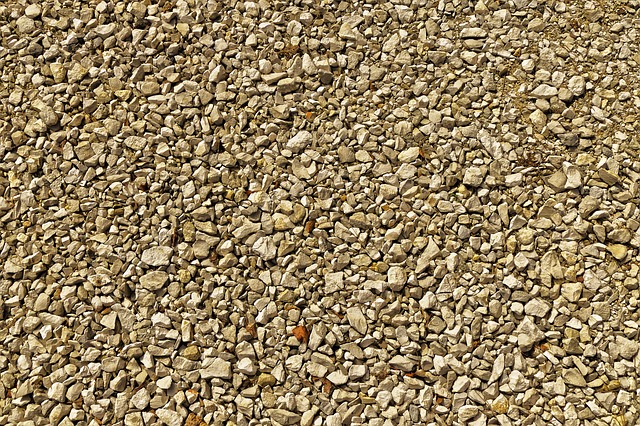Gravel in construction
Gravel is a loose aggregation of small, variously sized fragments of rock. It has a wide range of applications in the construction industry.
The weathering and erosion of rocks is the natural process by which gravel deposits are formed. Gravel can also be produced in quarries known as gravel pits, where rocks such as sandstone, limestone and basalt are crushed down to size. Gravel particle sizes range from 2 mm to over 60 mm, and are available in a range of colours, textures and stone types.
Gravel, along with sand, is used for the manufacture of concrete, as well as for mixing with asphalt as part of road construction. It can be used as the base layer for roads before being covered with tarmac, and is also commonly used to surface roadways, especially those in rural areas and in icy conditions. It can also be used to as part of roof coverings.
Gravel can be used along with pebbles as a form of render known as pebbledash which is used for the external walls of a building in which the top coat is textured to create a rough finish. For more information, see Pebbledash.
Gravel can be used in the filtration of water, where it acts as a natural filter holding back precipitates which may contain impurities as well as other sand-sized particles. The angularity and hardness of gravel makes it resistant to water erosion.
Gravel is commonly used for landscaping applications, such as on driveways, walkways, or as a decorative filler over soil instead of grass.
[edit] Related articles on Designing Buildings Wiki
Featured articles and news
Infrastructure that connect the physical and digital domains.
Harnessing robotics and AI in challenging environments
The key to nuclear decommissioning and fusion engineering.
BSRIA announces Lisa Ashworth as new CEO
Tasked with furthering BSRIA’s impressive growth ambitions.
Public buildings get half a million energy efficiency boost
£557 million to switch to cleaner heating and save on energy.
CIOB launches pre-election manifesto
Outlining potential future policies for the next government.
Grenfell Tower Inquiry announcement
Phase 2 hearings come to a close and the final report due in September.
Progress from Parts L, F and O: A whitepaper, one year on.
A replicated study to understand the opinion of practitioners.
ECA announces new president 2024
Electrical engineer and business leader Stuart Smith.
A distinct type of countryside that should be celebrated.
Should Part O be extended to existing buildings?
EAC brands heatwave adaptation a missed opportunity.
Definition of Statutory in workplace and facilities management
Established by IWFM, BESA, CIBSE and BSRIA.
Tackling the transition from traditional heating systems
59% lack the necessary information and confidence to switch.
The general election and the construction industry
As PM, Rishi Sunak announces July 4 date for an election.
Eco apprenticeships continue help grow green workforce
A year after being recognised at the King's coronation.
Permitted development rights for agricultural buildings
The changes coming into effect as of May 21, 2024.






















